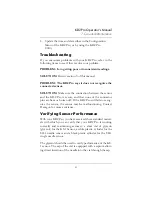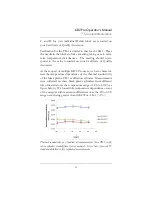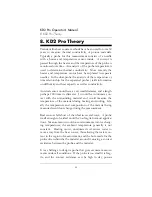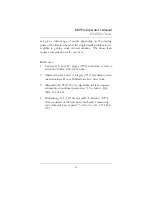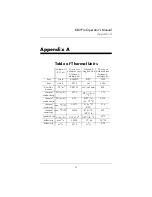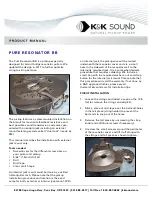
54
KD2 Pro Operator’s Manual
8. KD2 Pro Theory
8. KD2 Pro Theory
Transient line heat source methods have been used for over 50
years to measure thermal conductivity of porous materials.
Typically a probe for this measurement consists of a needle
with a heater and temperature sensor inside. A current is
passed through the heater and the temperature of the probe is
monitored over time. An analysis of the probe temperature is
used to determine thermal conductivity. More recently the
heater and temperature sensor have been placed in separate
needles. In the dual probe the analysis of the temperature vs
time relationship for the separated probes yields information
on diffusivity and heat capacity as well as conductivity.
An ideal sensor would have a very small diameter, and a length
perhaps 100 times its diameter. It would be in intimate con-
tact with the surrounding material and would measure the
temperature of the material during heating and cooling. Ide-
ally the temperature and composition of the material being
measured would not change during the measurement.
Real sensors fall short of the ideal in several ways. A probe
small enough to be ideal would be too fragile for most applica-
tions. Measurements in outdoor environments involve chang-
ing temperatures; the ambient temperature generally is not
constant. Heating moist, unsaturated soil causes water to
move away from the heat source, thus altering the water con-
tent in the region of measurement, and the hole made for the
probe often disturbs the material around it causing a contact
resistance between the probe and the material.
It is a challenge to design a probe that gives accurate measure-
ments under all conditions. If the probe is too small it is frag-
ile, and the contact resistance can be high in dry, porous












